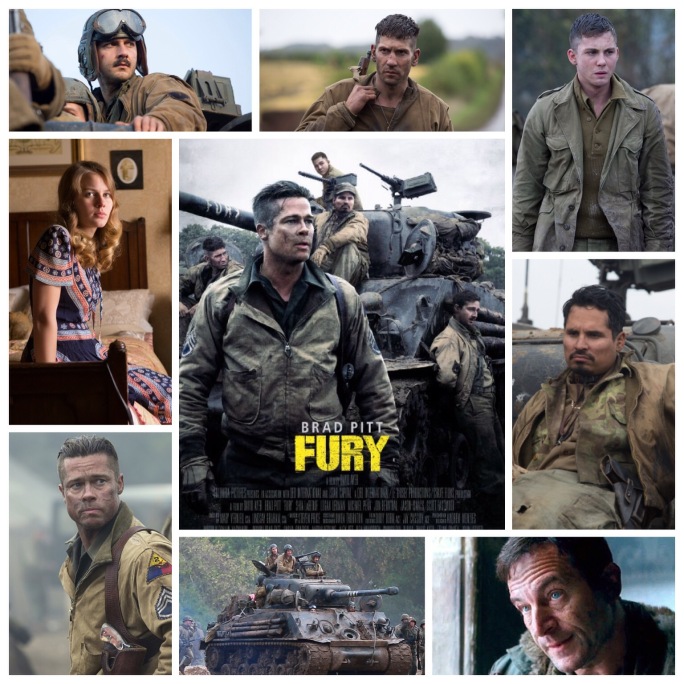David Ayer’s Fury is the most fearsome, unrelenting war film of the decade and quite the experience to sit through. One stumbles out of the theatre as shell shocked as the brave soldiers we’ve just witnessed onscreen, needing time to wind down from the horror, after which we realize that among the thunderous bravura and non stop, head shattering combat are moments of tender humanity and ponderous reflection, just enough to contrast the madness. Logan Lerman has the pretty boy look, which is quickly stripped away and replaced by frenzied terror and confusion, playing a young army clerk who hasn’t seen one second of combat, suddenly tasked with joining the ranks of a tank warfare crew. They are each hardened in their own way by what they’ve seen and done. Brad Pitt is Wardaddy, their iron jawed commander in a gritty, unstable and altogether brilliant performance. Jon Bernthal is the obligatory redneck Neanderthal, a big lug whose brutish ways mask a childlike yearning beneath. Shia Leboeuf is the restrained one, a bible reader and thinker whose resentment of the war radiates from his eyes like sad and sick beams of sympathy. Michael Pena, reliably excellent, is the closest to neutral of the group. Ayer airdrops us right into the action without pretext, warning or proclaimed intention. This isn’t a ‘men on a mission’ war flick, this is a single harrowing day in the lives of men at the end of the world as well as their ropes, an intimate study of the horror inflicted on both body and soul, both soldier and civilian, the collective horrific impact of the war refracted through the prism of a small period of time. Such a tactic has huge potential, and here it works wonders in brining us closer to these characters, as well as anyone they meet along their way. Pitt leads this ragtag band with the indifferent sentiment of a hardened, brittle man who has been in one too many a tight spot and seen one too many a comrade fall under his care to waste time with compassion for the enemy. Time and tide have turned killing into a purely instinctual, second nature business for him, and we see this unfold in a kicker of a scene where he forces Lerman to murder an unarmed German private who begs for his life. Such is war, and such is Ayer’s film, free from Hallmark moments and structured escapism. Midway through, the film stops dead in its tracks for a beautiful, tension filled sequence in which the band finds temporary refuge in crumbling abode with two German girls. The culture shock is numbed out by the extremity of the war, and these two groups are forced to coexist, if only for an hour or so. The youngest of the girls (Alicia Von Rittberg) is stunning, a baleful example of the corrupts of innocence, her character arc a testament to the senselessness of war. The combat scenes within the tank clank with clammy, claustrophobic dread and desperation, helped by the fact that for the most part they filmed inside real replicas. Jason Isaacs shows up in yet another war movie role as a grizzled commander who briefly assists them, and (of course) steals his two quick scenes in the process. War films often struggle to find humanity amongst the ugliness by trying a little too hard, and by being a little too obvious. This one is frank, unrelenting and assaults you with a deafening roar of chaos, with a few extremely subtle moments of introspect and emotion. It may just have cracked the formula for finding the comfort in such turmoil: less is more. One of the best war movies I’ve ever seen.
-
Subscribe
Subscribed
Already have a WordPress.com account? Log in now.

